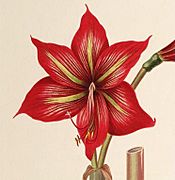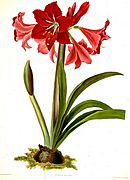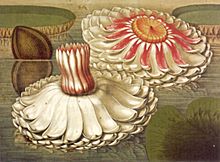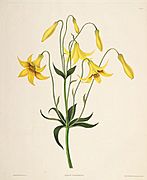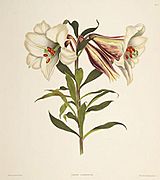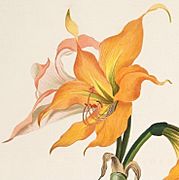Priscilla Susan Bury facts for kids
Quick facts for kids
Priscilla Susan Bury
|
|
|---|---|
| Born |
Priscilla Susan Falkner
12 January 1799 Liverpool, England
|
| Died | 8 March 1872 (aged 73) Croydon, England
|
| Nationality | British |
| Occupation | Botanist and Illustrator |
| Spouse(s) | Edward Bury |
Priscilla Susan Bury, born Falkner, was an amazing English botanist and illustrator. She was born in Liverpool on January 12, 1799, and passed away in Croydon on March 8, 1872. She is famous for her beautiful and detailed drawings of plants.
Contents
About Priscilla's Life
Priscilla Susan Falkner was born in Rainhill, near Liverpool. Her parents were Edward and Bridget Falkner.
On March 4, 1830, Priscilla married Edward Bury. He was a well-known railway engineer. They had at least three sons between 1831 and 1835. The family lived in different places, including Hillsborough Hall near Sheffield (from 1852 to 1860). Later, they moved to Croft Lodge in Ambleside, which is in the beautiful Lake District.
In 1860, after her husband passed away, Priscilla wrote a book about his life. It was called Recollections of Edward Bury.
By 1866, she had moved to Thornton Heath in Croydon. She passed away there on March 8, 1872.
Priscilla's Artistic Work
Even though Priscilla didn't train to be a botanist or a professional artist, she created many beautiful and scientific plant drawings.
Early Plant Drawings
She started drawing plants from the glasshouse at her family home, 'Fairfield'. By 1829, she had enough drawings of lilies and similar plants to publish a book. This book, called Drawings of lilies, featured her illustrations. They were made using a printing method called lithography.
Famous Plant Illustrations
From 1831 to 1834, Priscilla's drawings were published in a very important book called A Selection of Hexandrian Plants. The pictures were engraved by Robert Havell in London. He was also known for engraving the famous bird drawings by John James Audubon.
The book used a special printing technique called aquatint. This meant the 350 plant drawings were partly painted by hand. Only 79 people subscribed to this large book, mostly from the Lancashire area. John James Audubon himself was one of the subscribers! A famous art historian, Wilfrid Blunt, described the book as "one of the most effective colour-plate folios of its period."
Later Artistic Projects
After 1836, Priscilla continued her work. She created eight plates for a book called The Botanist.
Later, in 1860–1861, photographs of her drawings were included in a scientific book. This book showed tiny fossil shapes found in a chalk deposit in Barbados. New and bigger versions of this book were published in 1865 and 1869.
Gallery
-
E.F. Seedling Amaryllus, 1819. Minneapolis Institute of Art
See also
 In Spanish: Priscilla Susan Falkner Bury para niños
In Spanish: Priscilla Susan Falkner Bury para niños


